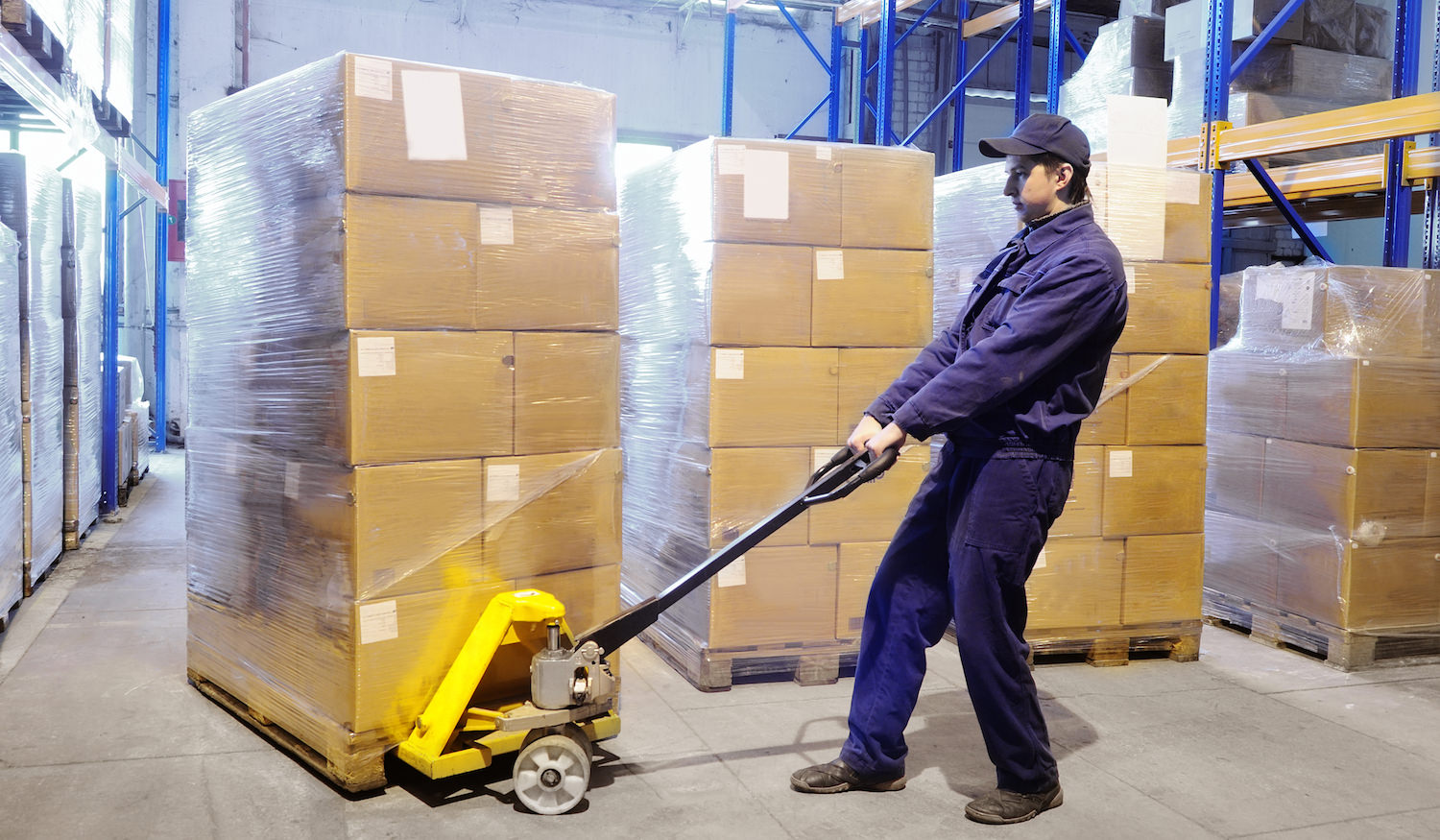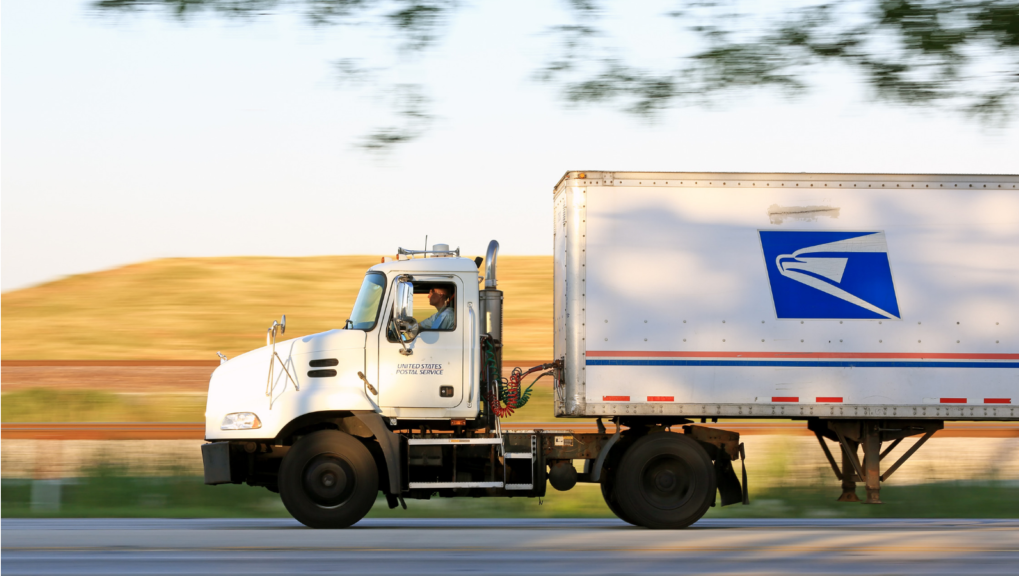Table of Contents
** Minutes
Warehousing and your supply chain
How warehouses fit into ecommerce operations
5 logistics and supply chain solutions compared
6 important criteria to choose a warehousing solution
What do you want to learn?
Warehousing is an important piece of your retail supply chain. While it’s not the sexiest of subjects, warehousing and inventory storage affect everything from sourcing raw materials and, efficiently managing inventory, to getting orders delivered to customers on time.
Though the principles of warehousing have not changed much over the years, warehousing solutions have evolved a lot.
With new technologies, urbanization, and the ever-growing world of online shopping, warehousing has never been a hotter topic — so much so that there has even been a shortage of warehouse space and on-demand warehousing popping up.
Read on to learn the ins and outs of warehousing and how inbound and outbound logistics play into running a business.
What is warehousing?
Warehousing is the process of storing physical goods or inventory in a warehouse or storage facility before they are sold or distributed. Warehouses safely and securely store and protect products in an organized way, making it easy to track an item’s location, when the items arrived, how long the item has been there, and the quantity on hand.
For a small or new business, warehousing their inventory may be done from home until they outgrow the space. At that point, the business will have to rent storage space, lease a warehouse, or outsource logistics to a third-party and store inventory in their warehousing facilities.
In ecommerce warehousing, products are stored until an order is placed online, which triggers the order to be shipped directly to the consumer from the warehouse facility. In retail stores, inventory may be temporarily stored in a warehouse before it’s shipped to a brick and mortar store.
“My garage was at maximum capacity — we couldn’t even fit another person in there. I could have leased a warehouse somewhere and grown into the space, but with the seasonal nature of our business, meaning we’d have to scale up our fulfillment and workforce every year, I knew I had to find a 3PL partner.”
Noel Churchill, Owner and CEO of Rainbow OPTX
Warehousing vs. storage
The line between warehousing and storage is semantically blurry. Yes warehouses are for storage, however they are stored with the intent to sell, and most warehouses are very high-volume and fast paced places with product being moved constantly.
Storage would mostly refer to non-commercial assets and liabilities being put away for safekeeping. Think of a storage unit. People put all the stuff that can no longer fit in their garage into their storage unit because their garage is full with other stored goods, all of which most likely has the intent to be kept long term.
Warehousing logistics
Warehousing logistics is at the core of any business that sells physical goods. A few of the most important elements of warehousing logistics include, warehouse management, warehousing services, operations, and warehouse management systems.
1. Warehouse management
Warehouse management is the strategic day-to-day running of operations in a warehouse to promote, improve, and ensure operational excellence. Managing a warehouse means overseeing all staff, training, inventory, equipment, safety and security, relationships with shipping carriers, warehouse slotting, and other moving pieces.
Responsibilities include:
- Forecasting and managing projected volume and labor
- Ensuring the proper safety gear is used and best safety practices are followed at all times
- Obtaining the proper licenses and certifications for anyone operating equipment
- Maintaining compliance, preventative maintenance for optimal performance, and requirements for regulatory agencies
- Continuously planning and managing operations as the business grows and becomes more complex
- Keeping goods secure and accessible and performing warehouse audits as needed
- Providing clear instructions on how to receive, unpack, retrieve, pack, and ship inventory
- Setting up bins and other storage spots in optimal places to minimize the effort required to move between destinations
- Recording all inbound and outbound shipments and collecting the proper documentation
2. Warehouse operations
Warehousing operations refers to the processes that take place in a warehouse revolving around the movement of goods and tracking inventory.
Principles of warehousing include functions such as receiving inventory, then placing each SKU into a separate dedicated storage location (e.g., in a shelf, bin, or on a pallet), and sending product to its next destination.
Efficient warehousing operations help keep:
- Costs low
- Inventory received and shipped on time
- Staff productive
- Sufficient quantities of product on hand
- Space below capacity
- Storage optimized and aisles clear
- Equipment used effectively
- Customers happy
3. Warehouse management systems
A warehouse management system (WMS) is a type of software that provides the tools necessary to manage warehouse operations and inventory movement to save time and eliminate manual processes. Warehouse management systems help optimize inventory and tracking, warehousing operations, workload distribution, and shipping.
These types of warehousing solutions give you unprecedented visibility and real-time insight into every action that’s happening in the warehouse. A good warehouse management system will even help generate electronic picking lists based on orders that have inventory stored close to one another to decrease inefficiencies.
By all means you want to avoid having poor ecommerce warehousing logistics that can result in wasted money, delayed orders, and potential legal liabilities. Streamlined warehouse logistics however can improve your bottom line and provide a top-notch customer experience.
When it comes to figuring out a picking system that is right for you, understanding where your picking activities are lacking efficiency is a good first step.
Setting mandatory inventory minimums to ensure having just enough inventory can also improve your warehousing logistics. This practice is known as reorder points and can have a major impact on a businesses growth or decline.
Let’s now see the role of supply chains in warehousing logistics.
Warehousing and your supply chain
Supply chains are being redesigned to fulfill orders faster than ever before, and warehousing logistics plays a direct role in making that come to fruition. To move finished goods through the supply chain, most inventory is shipped from a manufacturer, often from overseas, to a warehouse.
Some warehouses are used for longer-term storage while others conduct the entire order fulfillment process, turning inventory over very quickly. Unlike warehouses that are strictly storage facilities, a fulfillment warehouse handles warehousing but also continuously picks, packs, and ships orders to customers.
This can be managed in-house by an individual retailer or outsourced to a third-party logistics company that manages fulfillment for many companies.
How warehouses fit into ecommerce operations
When you buy something online, it magically shows up at your home. But before it gets there, it was likely stored in a warehouse. Ecommerce is driving logistics to deliver orders placed on websites and marketplaces at record speeds — here’s how it’s made possible.
Storing inventory
Storing inventory is placing specific products in designated locations. Each SKU you sell should have its own storage spot within the ecommerce warehouse. Warehousing and storage make it possible to:
- Pinpoint the exact location of any item of inventory
- Count the actual number of units on hand and compare it to the number of units listed
- Respond to product recalls, expired goods, and damaged inventory by knowing exactly which products are affected and where they are
- Ship out the oldest inventory first before anything that was more recently received
Shipping and receiving
Shippers send inventory to a warehouse where products are received, stowed, and arranged in a way that makes for efficient movement to keep operations running smoothly. Warehousing operations must be optimized to accept incoming inventory in a timely manner by knowing which products are arriving and how many units of each.
After the inventory has been stored and is ready to be transported again, shipping carriers such as DHL, USPS, and UPS pick up orders from the warehouse and ship them to their next destination.
Distribution centers
Distribution centers are most often used by big box companies that have both a physical and online presence. They are best for shorter-term storage until products are needed, at which point it is typically sent directly to retail locations, wholesalers, or consumers. Distribution centers are demand-driven with products moving in and out at a rapid pace by trucks constantly dropping off and picking up items.
Returns
Warehousing logistics includes being prepared for returns, especially when there is no in-store return option. Warehousing operations must be able to receive, assess, and process each returned item. You may even aim to provide customers with prepaid return labels, share return tracking and refund information, and make it as painless of an experience as possible for customers.
5 logistics and supply chain solutions compared
At ShipBob, we take care of some of the major logistics and supply chain functions for ecommerce companies, but there is often confusion about how they are different from one another. Here’s how we define these terms.
1. Warehousing
What it is: The storing of inventory for an extended period of time. Storage facilities can range from large warehouses with equipment such as forklifts, containers, shelves, and docks, to smaller storage spaces to hold excess product. Lease terms vary from short-term to long-term commitments. Warehousing may even assist with wholesale or B2B ecommerce orders where large quantities of inventory need to be shipped. Warehouse management systems can be used to manage these operations.
What it isn’t: There typically aren’t additional services outside of storing and organizing inventory.
2. Inventory management
What it is: Managing inventory is the monitoring of a company’s stocked goods. Activities include tracking inventory levels, ordering and restocking inventory, and demand forecasting to ensure you never run out of stock. Inventory management systems use software that helps businesses easily obtain this information without having to manually track or calculate it.
What it isn’t: Picking, packing, and shipping orders.
3. Order fulfillment services
What it is: All the steps in the fulfillment process, including:
- Warehousing
- Managing inventory
- Kitting inventory
- Picking items in an order
- Packing boxes and putting shipping labels on packages
- Shipping orders
- Facilitating the returns process
What it isn’t: Long-term storage.
4. Third-party logistics
What it is: The outsourcing of logistics. A 3PL handles order fulfillment services for you including warehousing products while replenishing often, inventory management, warehouse picking, packing, shipping, and other services needed to get orders to your customers.
Companies often provide tools and technology that connect to your ecommerce store to send orders as they are placed and help manage orders, inventory, and more.
What it isn’t: Fulfilling and shipping orders yourself, renting or buying warehouse space, hiring fulfillment staff, or purchasing equipment, workers comp, and liability insurance.
5. Handling fulfillment in-house
What it is: You are responsible for the entire retail fulfillment process yourself, including warehousing, managing inventory, packing boxes, going to the post office or having carriers come to you, and investing in, building out, and planning the fulfillment infrastructure you’ll need over time.
What it isn’t: Outsourcing fulfillment or sharing warehouse space with anyone outside of your company.
6 important criteria to choose a warehousing solution
There are many considerations that influence warehousing operations and management. Be sure to think through each of the following when researching warehousing solutions to find one that is right for you.
1. Storage costs and number of SKUs
SKUs help you keep track of your inventory but also help you calculate potential storage fees and how much space you will need in a warehouse.
For example, for every shirt you sell, you will need a separate storage unit for each size (XS, S, M, L, XL, XXL, etc.) in every color (yellow, red, blue, green, etc.) and style (long-sleeve, regular, pocket, etc.), and you will need to pay an individual storage fee for each variation.
If you only have a handful of SKUs, storage will be much less expensive than if you have 1,000 SKUs. And if you have 1,000 SKUs but you only sell 1,500 orders each month, some companies may not be able to work with you.
For example, ShipBob uses a 4:1 ratio of orders per SKU. This means you would need to have at least 4,000 orders each month if you have 1,000 SKUs in order to use ShipBob.
This is because of how fulfillment companies work — they don’t exist as standalone warehousing solutions — they aim to turn inventory over quickly by fulfilling orders as soon as they are placed. This means you restock inventory often enough to keep up with demand and aren’t stuck paying high storage and logistics costs.
So, if you’re not selling a lot yet but have a large amount of SKUs and inventory, warehousing as a standalone solution will be a much more cost-effective option than an all-encompassing fulfillment service that has separate fees for receiving inventory, shipping orders, and of course, warehousing and storage.
Warehousing fees can range from per-SKU or per-unit storage to a fixed fee for each bin, shelf, or pallet used. ShipBob charges for warehousing on a per-shelf, bin, and pallet basis, so you only pay for the space you use on a monthly basis.
2. Seasonality of your business
Seasonal fluctuations in your supply chain management and demand can make warehousing logistics very complicated. If your sales fluctuate seasonally or month-over-month, leasing a dedicated space or warehouse for your business may become costly during the low seasons or lead to a shortage of space when you get a new batch of inventory or during peak season and the holidays.
That’s why handing off logistics to a third-party like ShipBob can help prevent you from being stuck in either extreme.
3. Location of the warehouse
The optimal location for a warehouse will depend on your needs. If your goal is to store a lot of product in bulk over a long period of time, you can pay less by finding a rural location or a facility near a transportation hub. If your goal is to get orders delivered to customers as quickly as possible, you’ll want a fulfillment warehouse near your customers’ shipping destinations.
Warehouses in urban areas or big cities can deliver your orders to large populations very quickly. This helps meet customer expectations such as expedited shipping by reducing the distance traveled and time in transit. If your customers don’t all reside in one geographic area, a more centrally located warehouse can help reach more regions more efficiently as opposed to just one coast.
4. Number of warehouses you store inventory in
As your businesses grows, logistics will become more complex and require expansions. To optimize your supply chain and reduce shipping costs, you’ll need to select the most favorable locations in terms of size and geography.
Making sure you have enough space for not only current needs but also future growth will help prevent you from outgrowing the warehouse immediately. You should also pay attention to sales trends over time to monitor where orders are shipped to.
If you are shipping to zones that are far away from your warehouse, you will pay more in shipping costs and have a longer time in transit.
Having warehouses in multiple regions near your customers can help you offer affordable 2-day shipping and reduce abandoned carts.
For example, ShipBob has fulfillment centers all over the United States (and globe), letting ecommerce businesses distribute their inventory and take advantage of the extensive geographic footprint.
If you use multiple fulfillment warehouses, you’ll need full visibility into real-time stock levels across each location to make informed decisions and ensure each order is routed to and shipped from the warehouse that’s closest to the shipping destination.
5. Warehouse management technology
Whether you plan to manage your own warehouse or outsource supply chain management to a third-party, technology is a critical piece of warehouse management and operations. Fulfillment software automates the order fulfillment process while bringing together orders, shipments, inventory levels, logistics centers, and customers in one place.
By connecting your sales channels, the same technology will automatically send orders to the warehouse for associates on the floor to begin picking. Each step of the process is recorded and tracking information is sent back to the customer.
One example is ShipBob’s proprietary warehouse management system that powers its network of logistics centers and is also used by the ecommerce merchants that outsource fulfillment to ShipBob.
6. Value-add services
If you’re in need of additional services outside of traditional warehousing, pick, pack, and ship functions, be sure to find a company that can handle your unique requirements such as kitting and assembly, cross-docking, B2B orders, refrigeration services, and whatever else your business may need.
Have your own warehouse? Get a WMS
If you want to manage your own warehousing solution, ShipBob has a best-in-class warehouse management system (WMS) for brands that have their own warehouse and need help managing inventory in real time, reducing picking, packing, and shipping errors, and scaling with ease.
With ShipBob’s WMS, brands can even leverage ShipBob’s fulfillment services in any of ShipBob’s fulfillment centers across the US, Canada, Europe, and Australia to improve cross-border shipping, reduce costs, and speed up deliveries.
Conclusion
Warehousing affects every business that sells products. Choosing the right warehousing solution can help save money, meet customer demand, and drive efficiencies. Working with a third-party logistics company is very common for ecommerce businesses that don’t want to manage a warehouse themselves.
If you’re looking for a warehousing and ecommerce fulfillment partner, download the e-guide, “How to Choose a 3PL for Your E-Commerce Business,” and learn additional tips and considerations.
Warehousing FAQs
Here are some of the common questions we’ve heard from our customers related to warehousing.
What do you mean by warehousing?
Warehousing is the process of storing physical goods before they are sold or further distributed. Warehouses safely and securely store products in an organized way to track where items are located, when they arrived, how long they have been there, and the quantity on hand.
What are functions of warehousing?
The main functions of running a warehouse include: overseeing staff, training, storing and managing inventory, equipment, safety and security, relationships with shipping carriers, and other moving pieces.
What are the types of warehouses?
Not all warehouse are the same. Some warehouses are designed just for inventory storage. In ecommerce, the more type of warehouse is a fulfillment center, which is managed by a 3PL like ShipBob. A fulfillment center not only receives and store inventory, but it also automatically fulfills and ships orders on the merchant’s behalf.
What is warehousing and logistics?
Warehousing and logistics relates to the process of receiving and storing inventory efficiently and cost-effectively, so items can be easily fulfilled and shipped without slowing down the supply chain.
Does ShipBob help with ecommerce warehousing?
ShipBob is a tech-enabled 3PL and uses proprietary software across fulfillment networks. Orders are automatically sent to warehouses, where inventory is picked, packed, and shipped to your customers.
What is the difference between warehousing and storage?
Generally speaking, the main differences between warehousing and storage is the commercial aspect. Businesses store goods in warehouses to be sold at a later time, while consumers and individuals store the things they buy. Sometimes in their closet, garage, or storage unit.



